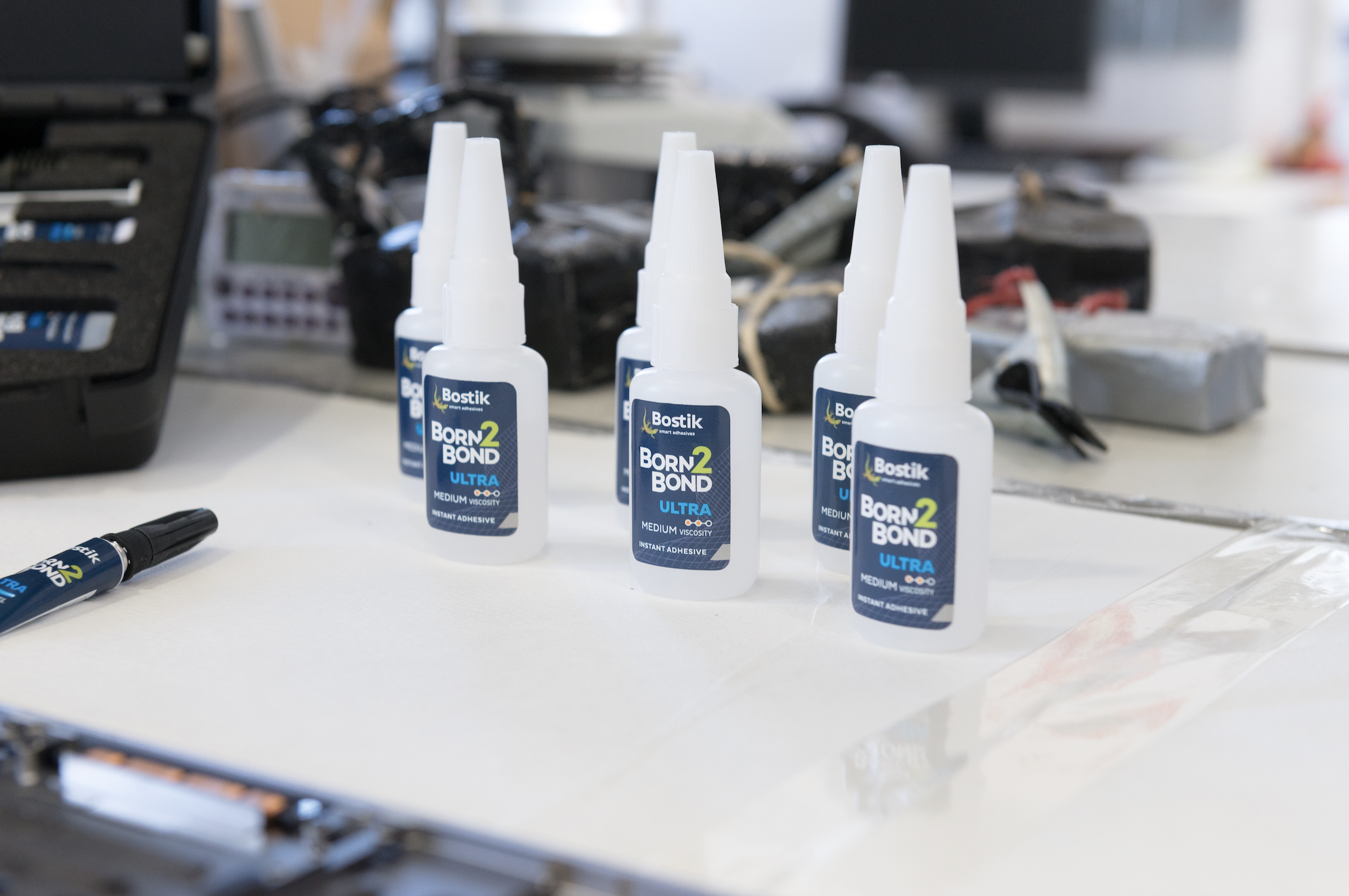
‘Blooming’, for those who use Cyanoacrylate-based adhesives, has been the talk of the manufacturing industry for many years. It is the white staining of parts in the vicinity of where the adhesive is applied that detracts from the overall appearance of the assembled parts.
In some cases, blooming is not an issue as assembled parts may be subsequently painted or finished. It is a desirable outcome but not an essential one. In other cases, such as in the manufacture of high-end goods, aesthetics is everything. Clearly staining on expensive fashion accessories or equally costly consumer electronics is not acceptable; it supports neither the quality of the product or its brand.
So what causes blooming? From a technical perspective, blooming results because, depending on their composition, fast reacting cyanoacrylate adhesives may comprise volatile ingredients, i.e. they have significant ‘vapor pressure’. The types with volatility generate staining when volatiles condense on part surfaces and this is particularly noticeable on black or shiny parts, and on optically transparent parts, for example lipstick cases, lenses and glass covers, high-end writing instruments, perfume bottles and such like.
Instant adhesive types
Within the world of instant adhesives, there are two principal types, so-called ‘Ethyl Cyanoacrylate’ and ‘Methoxyethyl Cyanoacrylate’, abbreviated as ‘ECA’ and ‘MECA’. ECA-based adhesive products are well-accepted and well utilized. They are generally inexpensive to produce and have become the mainstay of the adhesives industry, being convenient and easy to use and providing strong and instant adhesion. But they suffer two major disadvantages, both associated with their volatility: they create blooming and they have an acrid odor and must be used in proper environment.
The new generation of MECA-based products are designed to completely overturn these disadvantages – they have negligible blooming and are totally odorless and do not sting eyes, yet they still function as instant adhesives and can bond multiple substrate types without the need for any additional chemicals.
Thanks to innovative technology, MECA-based instant adhesives can now be accessed with these advantages in a cost-competitive manner. The technical reason why MECA-based instant adhesives work so well relates to the design of the very molecules they are formed from which have enormously reduced volatility. This means that blooming is designed-out at a fundamental level, because it cannot be countered by formulation alone, for example with odor masking ‘work-arounds’.
Curing speed
The speed with which ECA-based instant adhesive ‘cures’ (i.e converts from its liquid form to a durable solid), also affects the extent of blooming that a manufacturer has to contend and may be regulated. Not all ECA-based adhesives cure at the same speed; speed is affected by the formulation type and the nature of the material to be assembled. Clearly ECA adhesives with volatility will generate more blooming when they are not rapidly converted to solids, for example when bonding relatively passive parts. Such manufacturing scenarios can be addressed with accelerants within the formulation or by using additional agents such a spray-on primers, but both approaches have disadvantages.
ECA-based formulations contribute to blooming in end-use because it is almost inevitable that excess adhesive squeezes out from between parts being assembled. That exposes a volume of volatile material and white stains result in the vicinity of the joints. This is a particularly difficult problem to manage when bonding tiny parts and making fine joints – e.g in assembly of decals, decorative parts, miniature camera pieces in mobile electronics and so forth.
It is tempting to think that the more adhesive used, the better the bond, when in fact it is almost the exact opposite when using instant adhesives. Nevertheless, this requires very highly-engineered products to assure quality. Controlling the volume of adhesive dispensed, and how accurately it can be applied, are two of the most difficult challenges that a manufacturer faces but must be mastered to ensure a correctly designed instant adhesive is used effectively. The use of odorless non-blooming MECA-based products gives end-users a margin with regard to the accuracy they require depending on the nature of the parts being assembled.
MECA-based instant adhesives offer a logical solution to the problems associated with more traditional alternatives since they retain the advantages of rapid strong bonding on most materials, yet overcome the disadvantages of part staining, the need for special ventilated manufacturing zones and expensive high accuracy dispense equipment or post-cleaning. They are attractive options for manufacturers of small electronic products, high-end jewelry, exotic glass packaging and designer fashion accessories who may have dismissed the use of such adhesives because no cost-effective alternative was previously available.